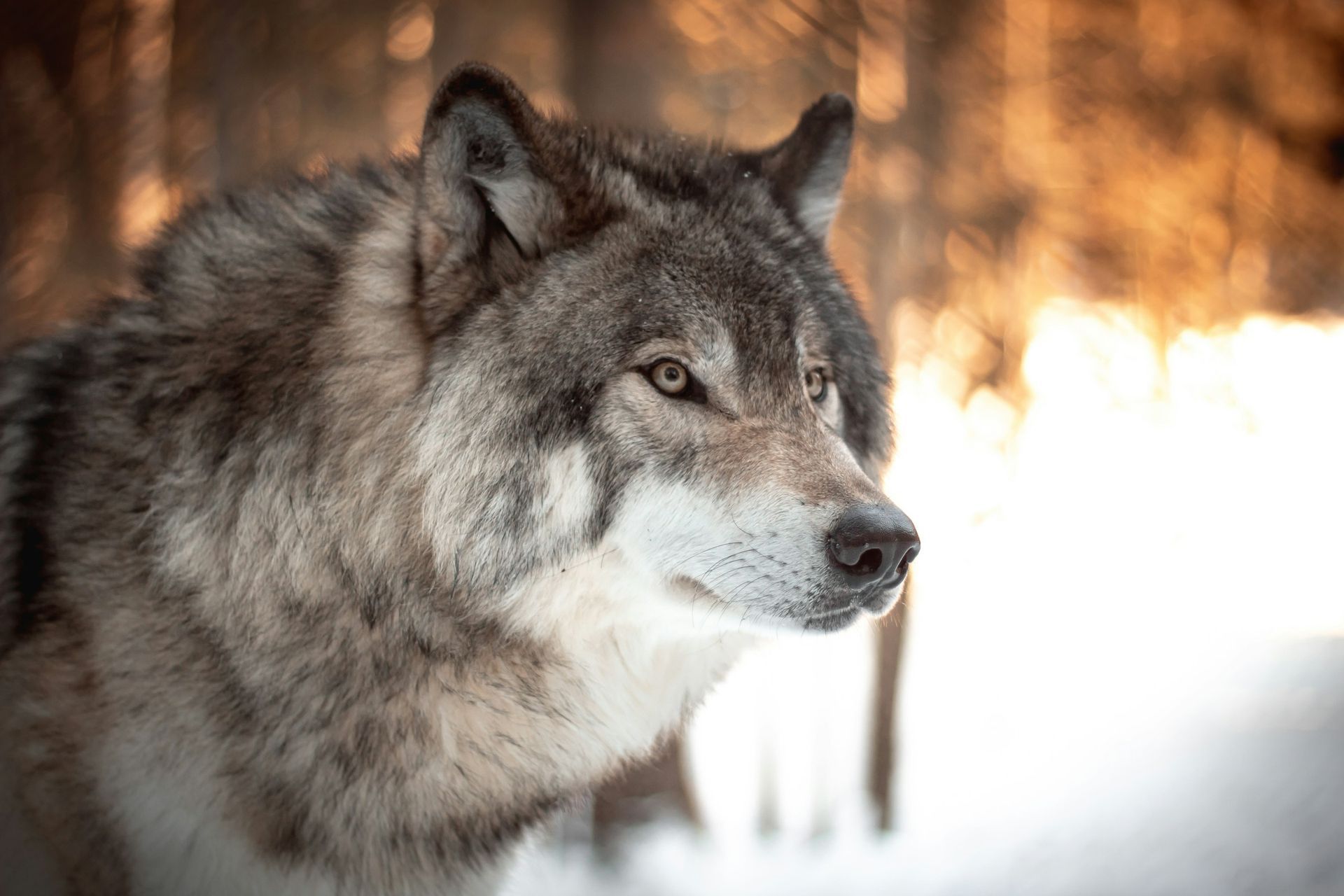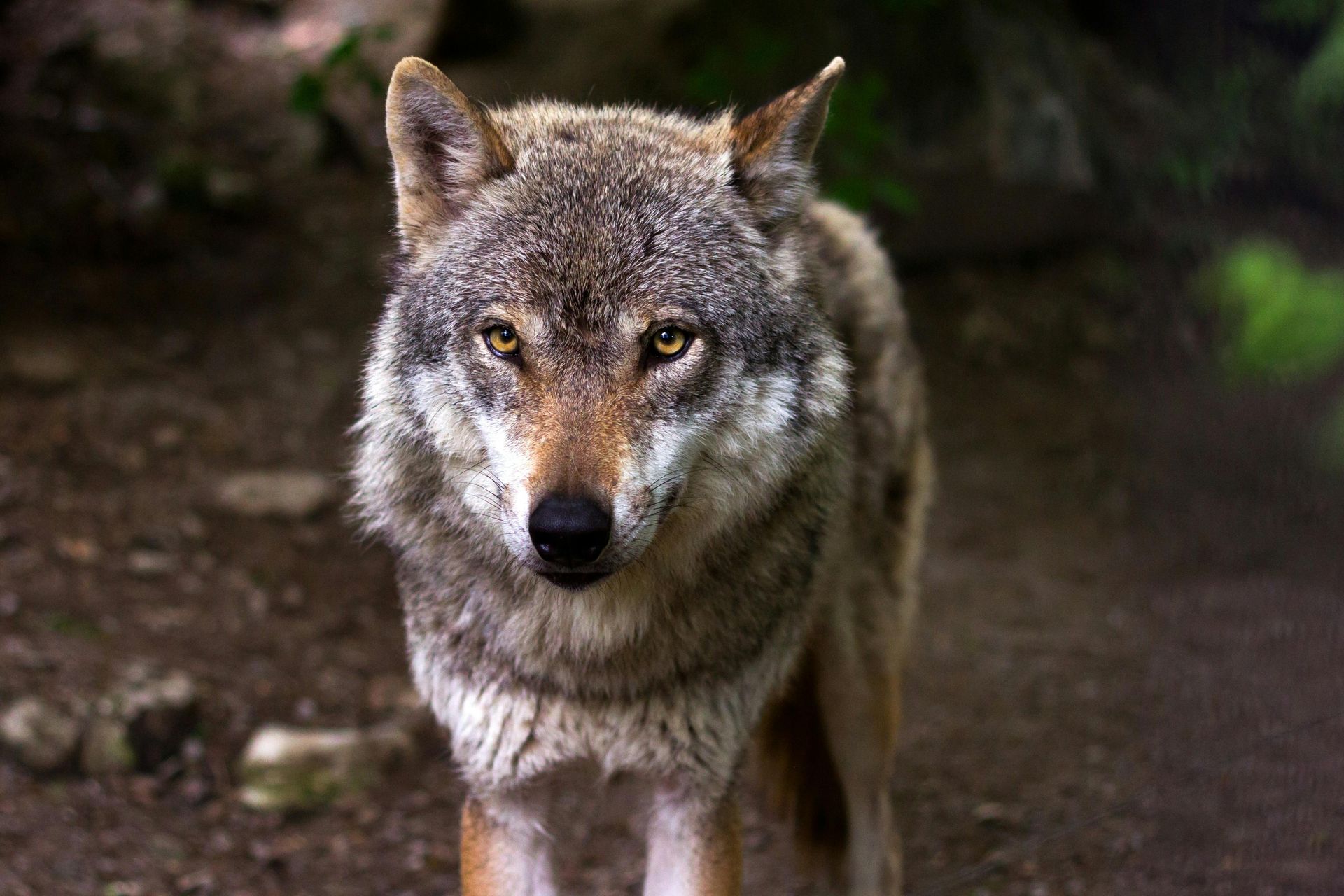Wolves are highly social, intelligent carnivores known for their complex pack dynamics, sharp hunting skills, and adaptability. Found in forests, tundras, grasslands, and mountainous regions, wolves play a critical role in maintaining the health of ecosystems by regulating prey populations and fostering biodiversity.
Wolves are large canids, measuring 4-6 feet in length (including their tails) and weighing between 50-120 pounds, depending on the subspecies and region. Their thick, weather-resistant coats can range in color from gray and black to white and reddish-brown. Wolves primarily hunt large ungulates such as deer, elk, and moose, but they also consume smaller animals when necessary.
Wolves live in structured packs typically consisting of a dominant breeding pair (the alpha pair), their offspring, and other subordinate individuals. Each pack defends its territory, which can range from 50 to 1,000 square miles. Breeding occurs once a year in late winter, with females giving birth to litters of 4-6 pups. The entire pack helps care for and raise the young.
Natural predators of wolves are few, but human-related threats such as habitat loss, hunting, and vehicle collisions pose significant risks. Despite these challenges, wolves have shown resilience in regions where conservation efforts have been implemented.

For your safety and the well-being of wildlife, please observe animals from a distance and avoid touching or disturbing them. If you encounter an animal that appears injured or in distress, contact a licensed wildlife rescue organization for guidance before intervening.
Found An Animal? Not sure how to help a wild animal in need? Learn when to step in, who to call, and how to help safely.
Did You Know?
- Wolves can travel up to 30 miles in a single day while hunting or patrolling their territory.
- Their howls can be heard over distances of 6-10 miles in open areas.
- Wolves have an exceptional sense of smell, up to 100 times stronger than humans.
- A wolf’s jaw can exert over 400 pounds of pressure per square inch—strong enough to crush bones.
- Each wolf has a unique howl, which helps pack members recognize each other.
- Wolves form strong social bonds and often mourn the loss of pack members.
- Pups are born blind and deaf but develop rapidly, opening their eyes after about two weeks.
- Wolves play an essential role in controlling prey populations, which helps maintain healthy vegetation.
- In Yellowstone National Park, the reintroduction of wolves transformed the entire ecosystem, improving river health and increasing biodiversity.
Problems Faced In The Wild
- Habitat Loss: Urban development and deforestation reduce available territory and prey.
- Human-Wildlife Conflict: Wolves are often targeted for preying on livestock.
- Vehicle Collisions: Wolves are vulnerable to traffic while traveling across fragmented habitats.
- Poaching and Illegal Hunting: Wolves are sometimes killed for sport or due to fear.
- Climate Change: Altered prey availability and habitat conditions impact survival.
- Disease: Wolves are susceptible to diseases such as distemper and mange.
Tips For Cohabitation
- Protect Livestock: Use secure enclosures and guardian animals to prevent conflicts.
- Support Wildlife Corridors: Advocate for protected areas that allow wolves to move safely between habitats.
- Avoid Feeding Wildlife: Reducing attractants helps keep wolves wild and safe.
- Educate Others: Share information about the ecological importance of wolves in maintaining healthy ecosystems.
- Drive Carefully in Wildlife Areas: Be mindful of wolves crossing roads in known habitats.
- Support Conservation Efforts: Participate in programs that monitor and protect wolf populations.



